Embroidered Red Hall Curtain with Phoenix and Peony Design

Qing Dynasty (1636—1912AD)
Width: 404cm; Height: 74cm
A hall curtain, also called a festive holiday curtain, hanging in a residential hall, is a piece of common embroidery used in sacrifice and celebration. The curtain, with height from 70cm to 80 cm and width more than 300cm, looks magnificent.
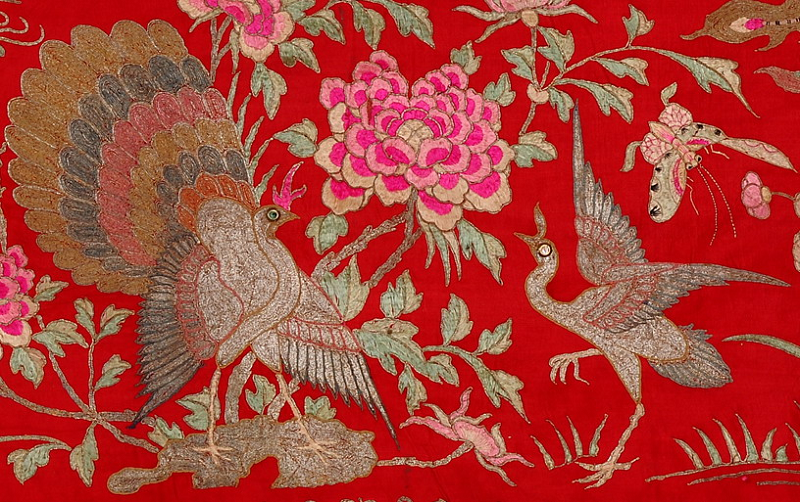
The hall curtain is characterized by the decoration of phoenixes, peonies, pheasants, birds, pomegranates, grapes, lotus and butterflies with gold and silver thread against red satin.

The bottom of the curtain is edged with a line of Panchang pattern (a Chinese traditional auspicious pattern) and peony pattern, symbolizing long-term prosperity.
深入探索

Embroidery of Cloud-riding Pattern on Yellow Ochre Thin Silk
From the collection of Hunan Provincial Museum, Western Han (206 BC- 24 AD)
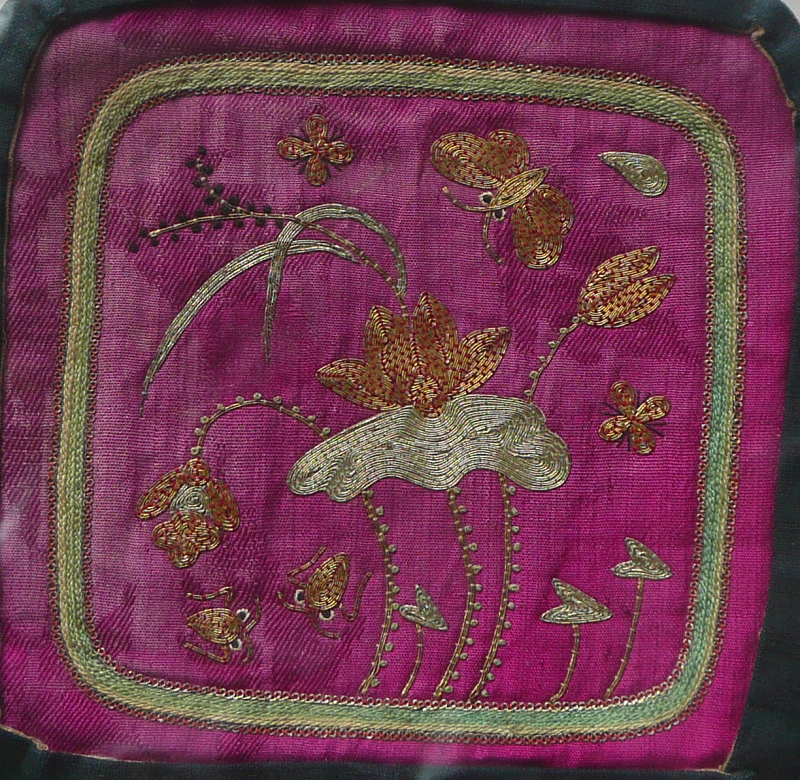
Embroidered Purple Pillow Cover with the Design of Flowers and Butterflies with Gold-And-Silver Thread
From the collection of Hunan Provincial Museum, Republic of China (1912—1949)
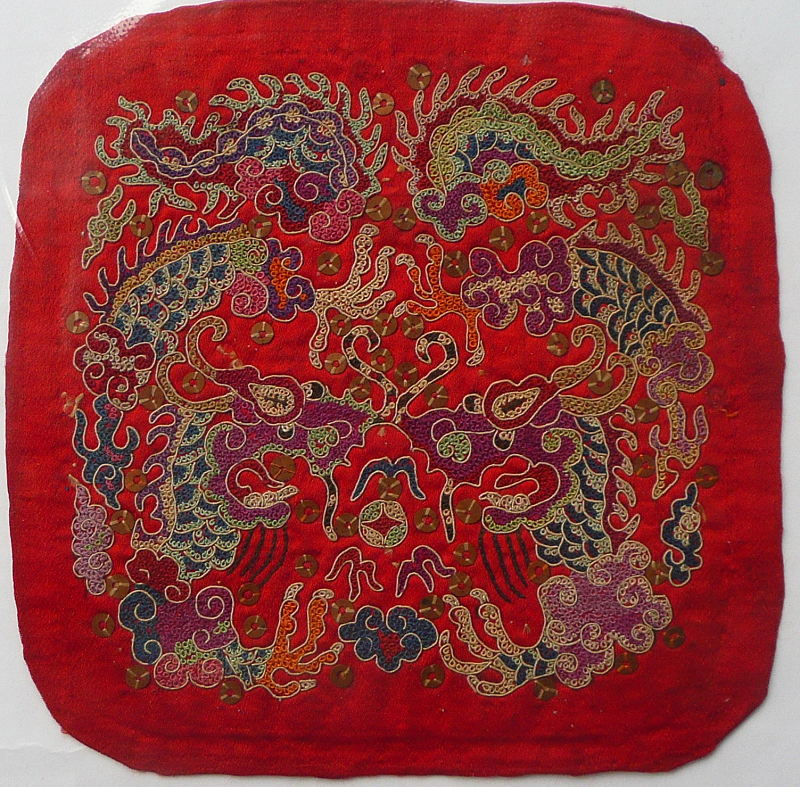
Embroidered Red Pillow Cover with Dragon and Phoenix Design
From the collection of Hunan Provincial Museum, Republic of China (1912—1949)

Blue Twill-Woven Cloth Pillow Cover Embroidered with Birds and Flowers Design
From the collection of Hunan provincial museum, Republic of China (1912—1949)
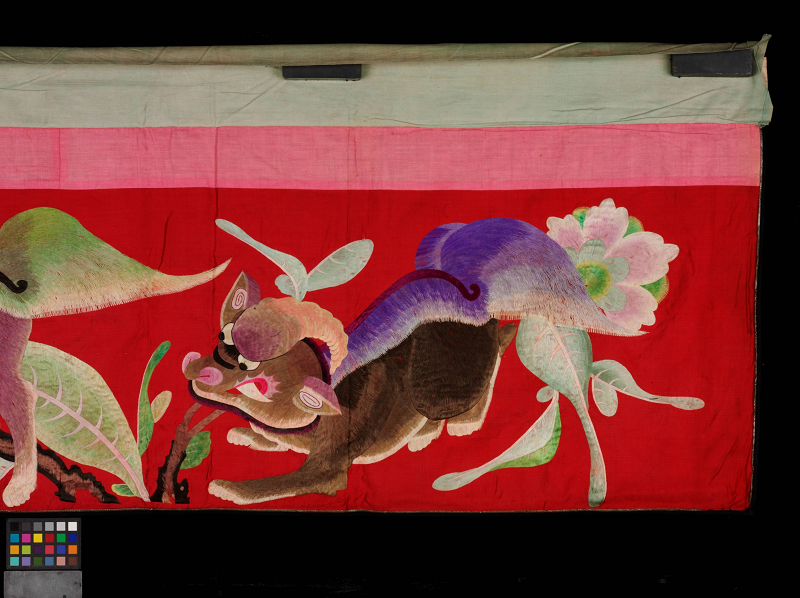
Embroidered Red Bed Curtain with Flowers and Animals Design (part)
From the collection of Hunan Provincial Museum, Republic of China (1912—1949)
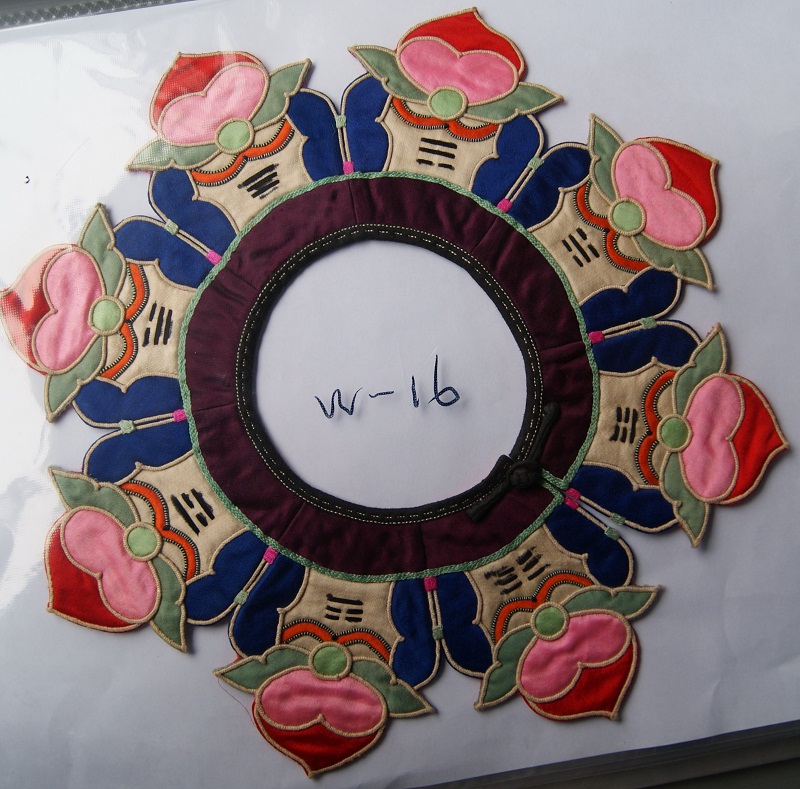
Embroidered Color Bib with Bagua and Peach Design
From the collection of Hunan Provincial Museum, Republic of China (1912—1949)
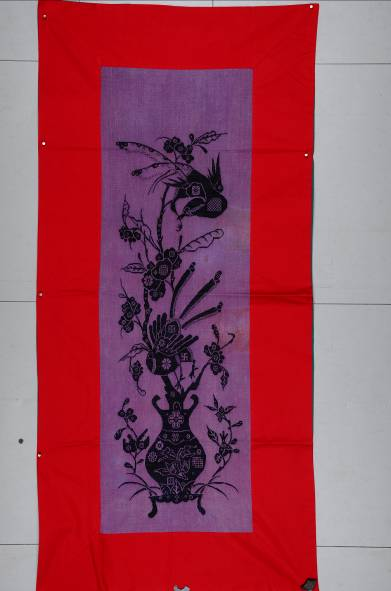

Door Curtain of Purple Cloth Embroidered with Flowers and Birds Design
From the collection of Hunan Provincial Museum, Republic of China (1912—1949)
Motifs and their Symbolism in Chinese Embroidery
The motifs or designs often seen in Chinese embroidery often carry their special meanings. The Chinese enjoy puns and plays on words, and often designs were used if their verbal sounds or written characters were similar to a character or virtue.
Phoenix and peony
In Chinese legend, phoenix is known as “king of birds” while peony is “king of flowers”. The combination of phoenix and peony symbolizes prosperity, bright future and happiness. People often use the decorations with the motifs of phoenix and peony and wish they will bring good luck to them.
Pheasant
Pheasant is often depicted standing on a rock in the sea, facing the sun. It is sometimes used in place of the Phoenix, and as such, is considered an emblem of beauty and good fortune.
Dragon
The five-toed dragon is reserved for the Emperor and his heirs, four-toed for court officials, three-toed for lesser nobility. It is the emblem of strength, goodness and safeguard, and when used in tandem with the ax and pheasant, judicial powers of the court are implied.



